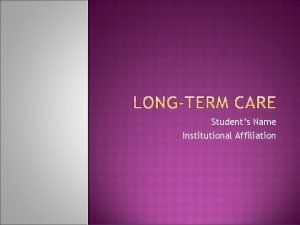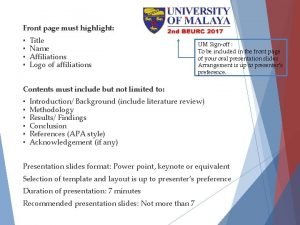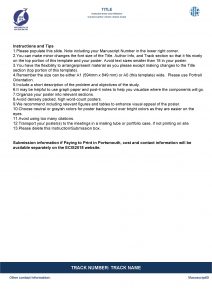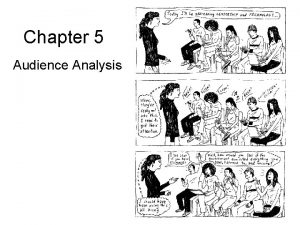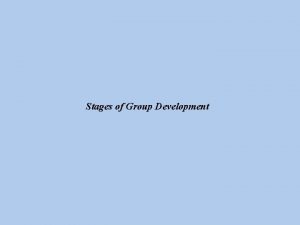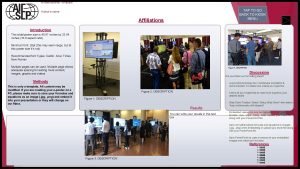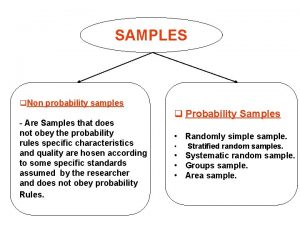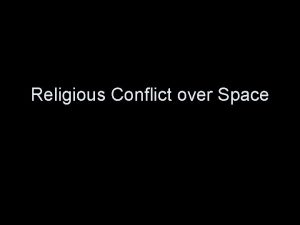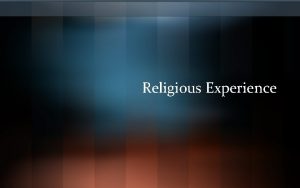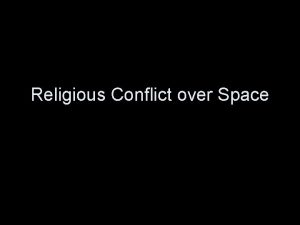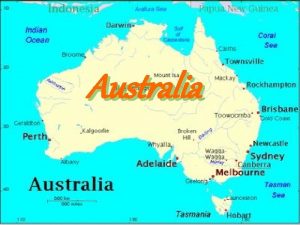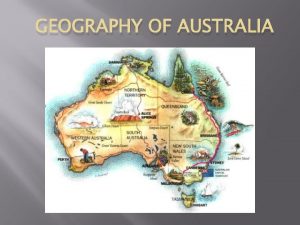Religious Affiliation in Australia Response Samples Outline the















- Slides: 15

Religious Affiliation in Australia: Response Samples

Outline the changing patterns of religious adherence from 1945 to the present using census date: Christianity has remained the dominant religious tradition in Australia but has fallen from 88% of the population to 64% of the population. Other religious traditions have grown from 0. 5% of the population to 6% of the population with dramatic growth in Buddhism to 2. 1%, Islam to 1. 7% and Hinduism to 0. 7% while Judaism has remained static at 0. 4% of the population.

Those that do not state their religion have remained static at 11% of the population. Those of No Religion have had the most dramatic growth which has grown from 0. 3% to 18. 7% of the population.

Account for the present religious Landscape in Australia in relation to:

Christianity as the major religious tradition: While Christianity has remained the dominant religious tradition it has fallen from a representative point of 88% of the population to 64% of the population. Catholicism has moved from being 21% of the population to being 26% of the population with a peek representative point of 27. 3% in 1991 so is now the dominant denomination in Christianity in Australia. Anglicanism has moved from being the dominant denomination to the second most dominant as it has moved from 39% of the population to 18. 7% of the population. This is as a result of the opening up of Australia’s immigration policies.

The Uniting Church appears on the Census figures for the first time in 1981 at 5% of the population and is as a result of the unification between all of the Methodist tradition and most of the Presbyterian and Congregationalist traditions. It is an expression of ecumenism in Australia. The Pentecostal expression of Christianity has grown from 0. 3% in 1976, when it was first included on the census form, to 1. 1% of the population in 2006. Much of this growth has come about from denominational switching, that is a member of another Christian denominations ‘switching’ into the Pentecostal denominations. Orthodoxy has grown from 0. 2% to 2. 9% due to

Immigration has had major impact on the changes within the Christian denominations. It has been the main cause in the growth of both Catholicism with migration from: Europe, particularly Italy, Malta and Poland; Asian, particularly Vietnam, Philippines, Southern India and Sri Lanka; South America as a whole; The Middle East, Lebanon, Palestine and Iraq.

The impact of migration can be most felt on such religious traditions as Buddhism, Islam and Hinduism. The growth the in these traditions can predominantly be attributed to migration. Most of this migration has taken place due to political and economic instability or war. This growth has been most prevalent from the 9181 census figures onwards.

Denominational Switching: Denominational Switching is a phenomenon that is particular to Christianity. It accounts for the fluctuation of denominational number within the Anglican and Protestant churches over periods of time. Members of these congregations can move amongst themselves as all of these denominations were founded as protest movement against Rome.

Much of this movement is of people in and out of the Pentecostal movement, which explains the growth in this denomination at the same time this denomination has difficulty in retaining those who switch into the denomination. Up to 16% of their congregations switch out, 14% drift out 2% die while for the other Christian traditions 8% switch out, 10 % drift out and 8% die. Catholics do not tend to switch out of their tradition but rather give up practising the tradition on a weekly basis but return to church for major celebrations and still have their children baptised into the tradition.

Denominational Switching also accounts for the fluctuation within the age groups who are worshiping within the denominations. Motivation for switching is often based upon a high need for personal spiritual, fulfilment rather then a need for denominational loyalty.

Rise of New Age Religions: New age religion has no Sacred Text or Ethics nor do they have central organisations or formalised clergy, geographic centre or creed. It is a spiritual movement, which will draw upon a host of religious traditions and beliefs, particularly those of the eastern traditions. On a whole it is has been rejected by mainstream Christian denominations. It is about personal fulfilment and is often an expression of a lack of faith or disconnection from mainstream traditional Christianity and it teaching on ethics, sexual, bioethical and social.

This category of people has grown by 71% from 30 500 people in 1996 to 52 100 in 2006. The differences in this group can be seen from the following: app 8% believe in astrology; 9% believe in tarot cards as reliable in telling the future and to help make decisions; 7% believe that crystals are an intrinsic source of energy and can help heal a person, 25% believe in a concept of god; 11% believe that god is a not a spiritual being but a human state on consciousness to which you can reach; 8% describe god as the greatest possible limit of human potential – these last two qualities link with eastern spiritualties; 3% believe that each individual person is god – this is both a reaction to the sense of a distant god and also a desire to control.

Secularism: This is the separation between state and religion which means that there is no official religion of a state or nation even if the majority of the population belongs to a religious tradition The situation developed in the 19 th Century when Christian denomination sought this separation to ensure that the sate could not interfere with religious affairs.

Because of this situation Australia has no official religion despite 60% of the population declaring themselves as Christian. While laws might be based upon Christian principles the ethics of the nation might differ to those of any particular religious tradition e. g. bioethics. This state has led to a growing percentage of the population declaring themselves to be of “No Religion” on the Australian Census figures.
 Denominational switching
Denominational switching Natural response and forced response
Natural response and forced response What is natural response
What is natural response A subsequent
A subsequent Sandwich paragraph example
Sandwich paragraph example Gang dress code
Gang dress code Institutional affiliation meaning
Institutional affiliation meaning Front name style
Front name style Dept. name of organization
Dept. name of organization Dept. name of organization (of affiliation)
Dept. name of organization (of affiliation) Affiliation poster
Affiliation poster Author name and affiliation
Author name and affiliation Name and affiliation
Name and affiliation Introduction to audience analysis
Introduction to audience analysis Pre-affiliation
Pre-affiliation Poster affiliations
Poster affiliations






